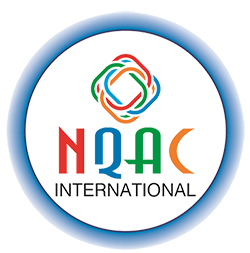ISO 22000 – Food Safety Management System

ISO 22000 is the management system implemented for defining the current and potential hazards in the food supply chain, in order to control these hazards defining implementing, monitoring preventions, evaluating and analyzing the results, continual improvement of the applications.
At the present day food safety is the all world concerning subject. Epidemic diseases spread through food do not only have effects on human life but also have lots of destructive effects on organizations and countries’ economies. Every year, hundreds of people are caught diseases due to food poisoning on worldwide and food manufacturer companies give immeasurable harm to their prestige by paying for damages.
Guaranteeing the quality and food safety is inevitable necessity for continuity of all organizations “Farm To Fork” in the food chain. For this reason risk management becomes a must for all organizations like restaurants, catering organizations, packaging service performing organizations, equipment and chemical producers relating to food production and concerning activities, service organizations working on pest control, cleaning, transportation and logistics and all organizations that want to safeguard their position.
Intermediate and final consumers prefer reliable organizations that could give the needed give guaranty. To win this confidence, organizations should prove that they have the food safety management system covering all processes and being applied effectively.
ISO 22000 is valid for all organizations in the global food supply chain and is an international standard. ISO 22000 provides the infrastructure about the subject of consistency to international standards and covers the most of the requirements of current Food Safety standards. The structure of the ISO 22000 is consistent with the clauses of ISO 9001 and ISO 14001 management systems.
This development shows that organizations need approaches for providing continual improvement of environmental applications and controlling interactions with the environment.
Benefits
![]() Gives customers the impression of confidence relating to the products that hygienic and safely produced,
Gives customers the impression of confidence relating to the products that hygienic and safely produced,
![]() Shows that all necessary measures are taken during production of food products,
Shows that all necessary measures are taken during production of food products,
![]() Prefers system approach instead of product approach,
Prefers system approach instead of product approach,
![]() Provides source optimization during food supply chain,
Provides source optimization during food supply chain,
![]() Ensures making hazard analysis for all control precautions,
Ensures making hazard analysis for all control precautions,
![]() Improves the product quality, increase the confidence to the product; decrease the risk for producing and selling unsafe products,
Improves the product quality, increase the confidence to the product; decrease the risk for producing and selling unsafe products,
![]() Ensures safe food production and transportation to customer by preventing possible hazards,
Ensures safe food production and transportation to customer by preventing possible hazards,
![]() Provides transition of products from quality control to preventative quality assurance,
Provides transition of products from quality control to preventative quality assurance,
![]() Provides reducing the customer complaints and by this way saving the time and cost,
Provides reducing the customer complaints and by this way saving the time and cost,
![]() The potential hazards in the production and products could be obtained and eliminated early on,
The potential hazards in the production and products could be obtained and eliminated early on,
![]() Reduces the costs due to loss and refundment,
Reduces the costs due to loss and refundment,
![]() Helps improving better relationship with legal authorities about food safety
Helps improving better relationship with legal authorities about food safety
